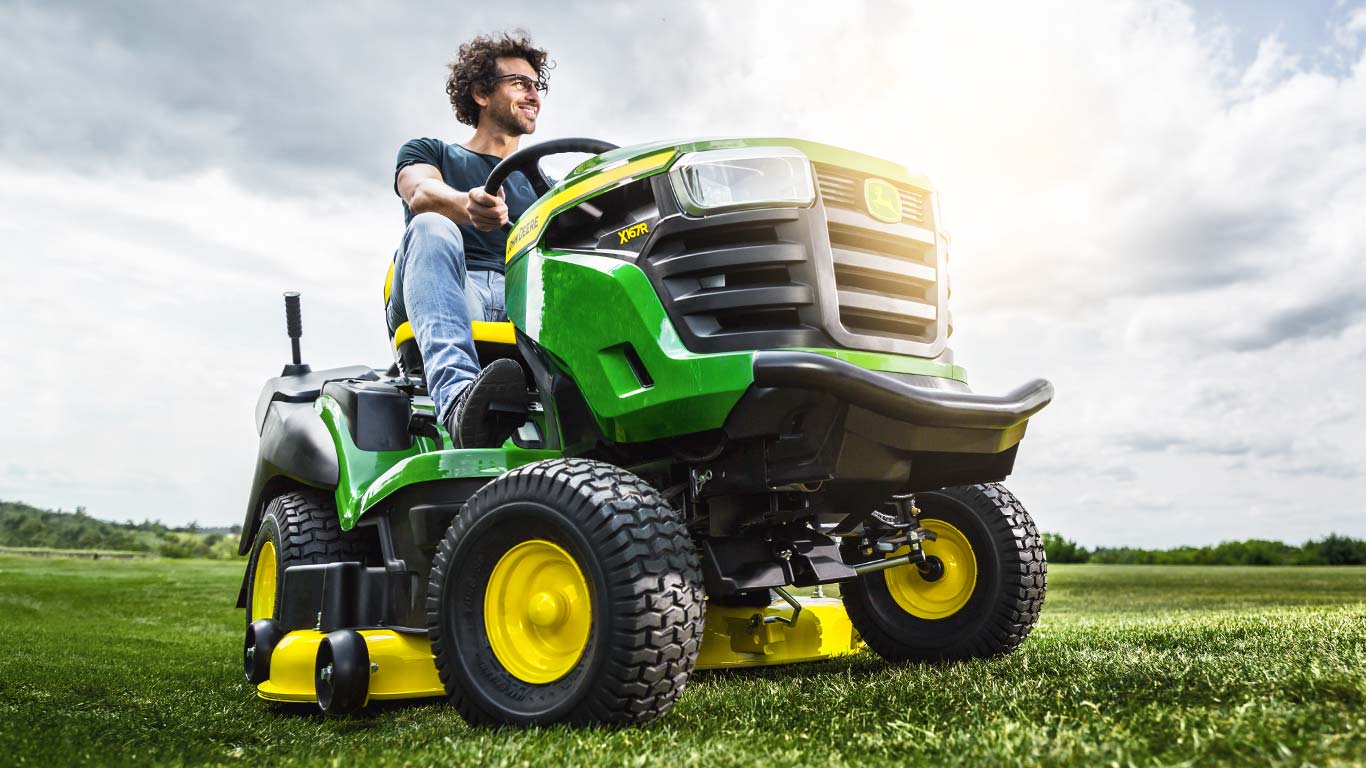Our top 5 mowing tips for healthy lawns
Mowing can be so much more than just a cosmetic trim. Done right, it can boost the overall health and durability of your lawn. Check out our best mowing practices for tip-top lawns
Proper mowing can help control weeds, recycle nutrients, encourage deep root growth. Best mowing practices will vary based on season, weather conditions, grass species, and how intensely you manage your lawn. Here are some points to consider.
1. Essential: a sharp, properly installed mower blade
A dull blade, or, even worse, one installed upside down, won’t provide a clean cut. That not only causes your grass to look ragged – the injured grass now has more entry points for insects and disease, says Laurie Tren- holm, University of Florida urban turfgrass specialist. A clean cut from a sharp blade provides a nice, even look that is also far healthier for the grass.
2. Treat your grass species right
Each grass species has a preferred height. Taking the time to identify the lawn’s grass species and search out the recommended cut height can help ensure a healthy, thriving lawn, Trenholm says.
“Ideal mowing height is based on the size of the grass species’ leaf blades. Finer bladed grasses can be mowed shorter while wide-leafed species do better with a little more height,” Trenholm says. St. Augustine grass is at the top end of length for wide-leafed species, thriving at 3.5 to 4 inches tall while Centipede grass, which grows prostrate to the ground, can be maintained at just 1 to 2 inches tall.
3. So what’s the right mower deck height?
Grass species is the primary factor here, but not the full story. A good rule of thumb for mowing is to not remove more than one third of the leaf tissue present in a single mowing.
A shorter lawn often has more weed problems because the canopy isn’t as thick, allowing more light to reach the soil and germinate weed seeds. However, if you allow your lawn to grow too long and then cut back it back dramatically, it can stress the grass and will cause it to pull nutrients from the root system, degrading the roots and eventually resulting in a thinning, unhealthy lawn, says Clint Waltz, University of Georgia extension turfgrass specialist. Regularly cutting a lawn shorter than the grass species prefers will have the same effect.
Your best plan is to keep the mowing height consistent throughout the year - just leave the mower height set to where it’s ideal for your grass species.
4. Timing: Mow at the right interval
It’s pretty common sense: If your lawn is heavily fertilized and irrigated, or in its active growth period, it may need mowed twice a week. If your grass has entered its dormant season you may not need to mow at all. And if grass is suffering from drought stress, you don’t want to mow at all – even minor foot traffic can cause damage the.
Stick to the rule of never removing more than one third of the leaf tissue at a time. If the desired lawn height is 2 inches, it needs to be cut when it grows to 3 inches tall.
5. What to do with the clippings?
If you’re staying on top of your mowing and don’t produce big clumps of material, you should deposit clippings right back onto the lawn – they’re full of nutrients that your lawn can use. Even leaves, to a certain extent, can be mulched and left to feed the soil.
